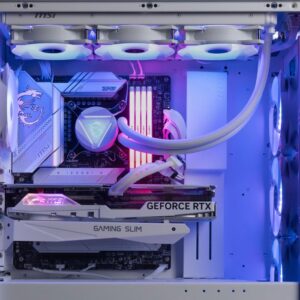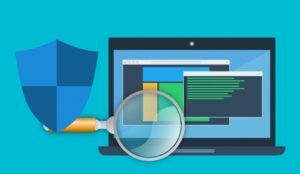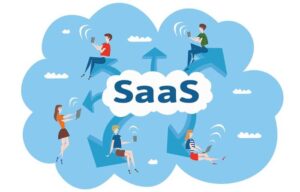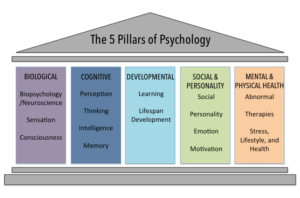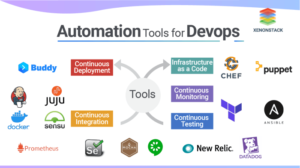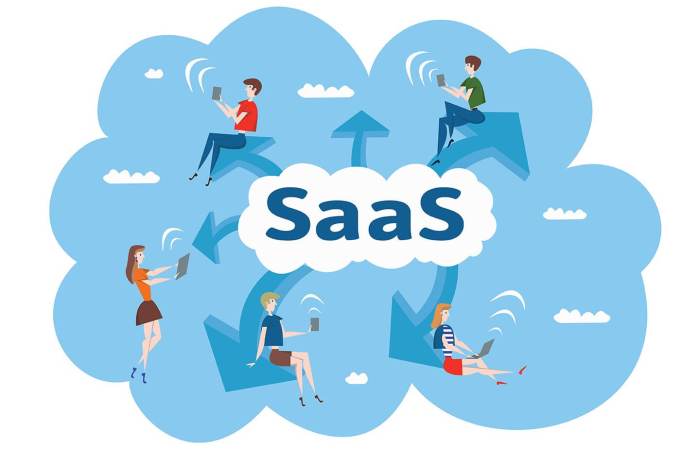
SaaS vs on-premise software sets the stage for this enthralling narrative, offering readers a glimpse into a story that is rich in detail and brimming with originality from the outset.
As businesses increasingly rely on technology for their operations, the choice between Software as a Service (SaaS) and on-premise software becomes crucial. This decision can significantly impact cost, flexibility, maintenance, and overall business growth. Understanding the nuances of both models is essential for organizations aiming to optimize their software solutions.
SaaS vs On-Premise Software Overview
SaaS (Software as a Service) and on-premise software represent two distinct paradigms for deploying and utilizing software applications. Each model offers unique advantages and challenges that can significantly impact a business’s operations, costs, and overall flexibility. Understanding these differences is crucial for organizations that are evaluating their software needs.When comparing SaaS and on-premise solutions, three primary factors come into play: cost, flexibility, and maintenance.
SaaS typically involves a subscription-based pricing model, which can lead to lower initial costs since there’s no need for extensive hardware investment. On-premise solutions, however, often require a larger upfront investment for hardware, software licenses, and ongoing maintenance. Flexibility also varies, with SaaS offering more adaptability through cloud-based access, while on-premise solutions provide greater control over the software and data.
Maintenance responsibilities differ significantly as well; with SaaS, the provider manages updates and security, leaving businesses free to focus on their core objectives. In contrast, on-premise software requires dedicated IT resources to manage upgrades and security measures.
Deployment Methods and Accessibility
The deployment methods of SaaS and on-premise software are fundamentally different. SaaS applications are hosted on the cloud, which allows users to access them from any location with internet connectivity. This accessibility can enhance collaboration among teams spread across different geographical regions. Conversely, on-premise software is installed directly on local servers and accessed via internal networks, which can limit accessibility to specific locations or devices.The implications of these deployment methods are significant.
For businesses that require remote access or the ability to scale quickly, SaaS is often the more practical choice. In contrast, organizations that require stringent data control and security may prefer the on-premise model. The accessibility offered by SaaS can also foster a more agile and responsive business environment, while on-premise solutions may provide stability and reliability for critical operations.
Scalability for Businesses of Varying Sizes
Scalability is another critical aspect to consider when choosing between SaaS and on-premise software. SaaS solutions are inherently designed to scale easily, allowing businesses to adjust their usage and capabilities as they grow. This elasticity is particularly beneficial for startups and small businesses that may experience fluctuating demands. On-premise software, while potentially offering high performance for established companies with stable needs, can present scalability challenges.
Expanding an on-premise solution often requires additional hardware investments and lengthy installation processes. Consider the following scenarios to illustrate this point:
- SaaS Example: A growing e-commerce startup might start with a basic SaaS package for its inventory management. As sales increase, the company can easily upgrade its subscription to accommodate more products and features without significant downtime or additional investments.
- On-Premise Example: A large manufacturing firm may invest in an on-premise ERP system tailored to its needs. If production demands increase, scaling the system could involve purchasing new servers and hiring additional IT staff, leading to higher costs and longer implementation times.
Advantages and Disadvantages
When it comes to choosing between Software as a Service (SaaS) and on-premise software, understanding the advantages and disadvantages of each option is crucial. Each has its unique features that cater to different business needs, and weighing these factors can help organizations make informed decisions.
Advantages of SaaS
SaaS provides a range of benefits that make it appealing to businesses aiming for efficiency and ease of use. The following points highlight the key advantages of opting for SaaS solutions:
- Ease of Use: SaaS applications are typically user-friendly, allowing for quick onboarding and a shorter learning curve. This ease of use facilitates fast deployment and minimizes downtime.
- Automatic Updates: With SaaS, software updates are automatically managed by the service provider. This ensures that users always have access to the latest features and security improvements without the hassle of manual installations.
- Cost-Effectiveness: SaaS usually follows a subscription-based pricing model, reducing upfront costs. Organizations can allocate budget resources more flexibly, paying only for what they need.
- Accessibility: Being cloud-based, SaaS applications can be accessed from anywhere with an internet connection. This enhances remote work capabilities and collaboration across distributed teams.
- Scalability: SaaS solutions can easily scale according to business growth. Companies can adjust their subscriptions as needed, accommodating fluctuating user counts and feature requirements.
Advantages of On-Premise Software
On-premise software offers several benefits that appeal to businesses prioritizing control and security. Here are the notable advantages of choosing on-premise solutions:
- Control: Organizations that use on-premise software maintain complete control over their systems, data management, and infrastructure, allowing for tailored configurations and customizations.
- Security: With sensitive data stored on local servers, businesses may perceive on-premise solutions as more secure. This setup allows organizations to implement their security protocols and compliance measures.
- Performance: On-premise software can deliver superior performance for resource-intensive applications, as they are not dependent on internet connectivity for operation.
- Integration: On-premise solutions can often integrate more seamlessly with existing systems and legacy software, enhancing operational efficiency and minimizing disruptions.
- Data Ownership: Organizations have full ownership of their data, ensuring that they can manage it according to their specific policies without relying on a third-party vendor.
Challenges and Limitations of SaaS
While SaaS has its benefits, there are also challenges to consider. For example, reliance on internet connectivity can hinder access during outages. Furthermore, data security concerns may arise as sensitive information is stored off-site. Additionally, subscription costs can accumulate over time, potentially making it more expensive compared to one-time purchases.
Challenges and Limitations of On-Premise Software
On-premise software presents its own set of challenges. High upfront costs for hardware and licensing can create a significant financial burden. Additionally, maintaining and updating the software requires dedicated IT resources, which can strain smaller organizations. There is also a risk of obsolescence, as companies may struggle to keep pace with rapidly evolving technology compared to the nimbleness of SaaS providers.
Related Topics and Their Impact

The decision to opt for SaaS or on-premise software is closely intertwined with several related factors, such as web hosting, domain names, web design, and the overall potential to make money online. Understanding these elements can significantly influence not only the software choice but also the success of a business in the digital landscape. Each of these factors plays a distinct role, shaping how organizations can leverage technology for growth and operational efficiency.
Web Hosting and Domain Names
Web hosting and domain names are critical components that affect the choice between SaaS and on-premise software solutions. The hosting environment determines the performance, reliability, and accessibility of software applications, while the domain name plays a vital role in branding and online presence. When selecting software models, businesses must consider the following aspects:
- Hosting Infrastructure: SaaS providers manage hosting for their applications, ensuring high availability and scalability, often making them more appealing for businesses lacking extensive IT resources.
- Domain Integration: On-premise solutions typically require a separate hosting arrangement, which can complicate domain management and integration. This adds to operational costs and demands more technical know-how.
- Performance and Speed: SaaS often guarantees optimized performance through dedicated servers and fast content delivery networks, unlike on-premise solutions, which may face latency issues depending on local infrastructure.
Web Design and Development
Integrating SaaS applications effectively into existing systems necessitates a strong foundation in web design and development. A well-designed interface can enhance user experience and promote seamless connectivity between various applications. The importance of web design and development in this context includes:
- User Experience: Intuitive designs increase user satisfaction and retention rates when interacting with SaaS applications, making businesses more likely to succeed.
- Customization: Development teams can create tailored solutions that leverage APIs provided by SaaS platforms, ensuring a fit-for-purpose application that meets business needs.
- Responsive Design: With mobile and web access being crucial, proper design ensures that SaaS applications remain functional and visually appealing across devices.
Revenue Generation and Software Model Choice
The selection of the right software model can significantly facilitate making money online. Businesses that align their software solutions with their revenue goals often see improved outcomes. Consider the following points on how software choice impacts revenue:
- Cost Efficiency: SaaS models typically offer subscription-based pricing, reducing upfront costs and allowing businesses to invest more in marketing and growth initiatives.
- Scalability: SaaS solutions enable businesses to scale easily without the need for significant infrastructure investment, allowing for quick adjustments in response to market demands.
- Access to Latest Features: SaaS providers frequently update their software, ensuring businesses benefit from the latest technologies and features that can enhance revenue generation strategies.
Ultimate Conclusion

In conclusion, choosing between SaaS and on-premise software requires careful consideration of various factors. Each option has its unique advantages and challenges, making it vital to assess your business needs and goals. By weighing the costs, flexibility, and scalability of both models, you can make an informed decision that aligns with your strategic objectives.
Popular Questions
What is the main difference between SaaS and on-premise software?
The main difference lies in deployment; SaaS is hosted in the cloud and accessed via the internet, while on-premise software is installed locally on a company’s servers.
Is SaaS more cost-effective than on-premise software?
Generally, SaaS tends to be more cost-effective upfront due to lower initial investments, but long-term costs can vary based on usage and subscriptions.
Can on-premise software be more secure than SaaS?
Yes, on-premise software can offer greater control over security, as businesses can implement their own security measures and protocols.
Are updates automatic for SaaS solutions?
Yes, one of the benefits of SaaS is that updates are handled automatically by the provider, ensuring users always have the latest features and security patches.
How does scalability differ between the two models?
SaaS solutions generally offer easier scalability, allowing businesses to quickly adjust their subscriptions based on user needs, while on-premise solutions may require additional hardware or licenses for scalability.
